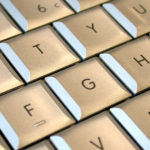There is nothing more frustrating than a computer that takes a good ten minutes to boot up. But we’ve compiled five simple tips for making your computer run faster so you can avoid those moments of annoyance.
1. Have programs you’re not using? Uninstall!
A lot of computers come with programs you don’t need and will never use, which run in the background whenever your computer is turned on. This slows down your computer processing speed, so delete these where possible.
Open your list of installed software and uninstall all programs you’re not using, avoiding any that are linked to your computer’s hardware needs.
2. Delete any temporary files
Temporary files are often accumulated on your computer’s hard disk, slowing it down. Get rid of these files by opening up your Temp folder, selecting any files that are older than the current day and delete these.
Don’t forget to empty the recycling bin or trash to ensure they disappear for good!
3. Back up and delete
If you are storing a large amount of photos or video footage on your computer, it is bound to slow it down. Regularly back up your files on to two external hard drives and then delete what’s on your computer.
If you are finding your hard drive is continuously getting to more than 85% full, consider installing a new hard drive in your PC for added space.
4. Clean up your PC
Windows offer an in-built cleanup system for your PC called Disk Cleanup.
How does this work? It simply scans your computer for large files that aren’t being used, such as temporary internet files, and deletes them.
To open the tool, find it under Accessories > System Tools and put it in to action to get your computer up to speed!
5. Clear the dust
Dust can be very damaging for your computer, as it stops it from cooling down and allowing airflow to happen. By cleaning out the dust, you can stop your computer from overheating and allow it to work faster.
The easiest way to clean your desktop or laptop is to remove the exterior of your computer and use a hoover with a small attachment and on a low setting to suck out some dust. Ensure all cables are disconnected and that your computer has been switched off for at least half an hour.
There you have it – five simple steps to ensure your computer operates faster and causes you minimal frustration! But if these don’t help, there could be a more serious issue with your computer, so contact the computing support technicians at Rapid IT Support.


